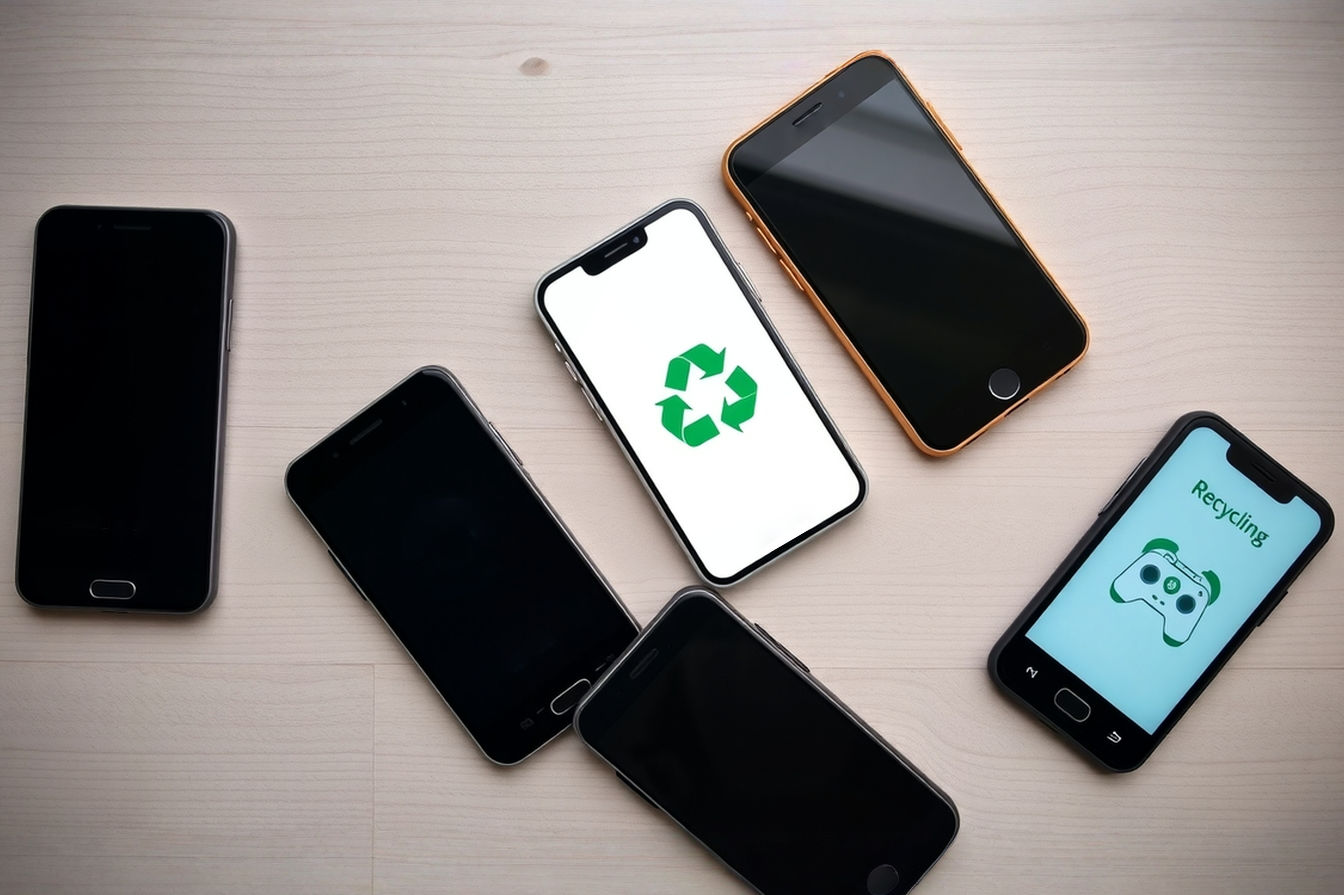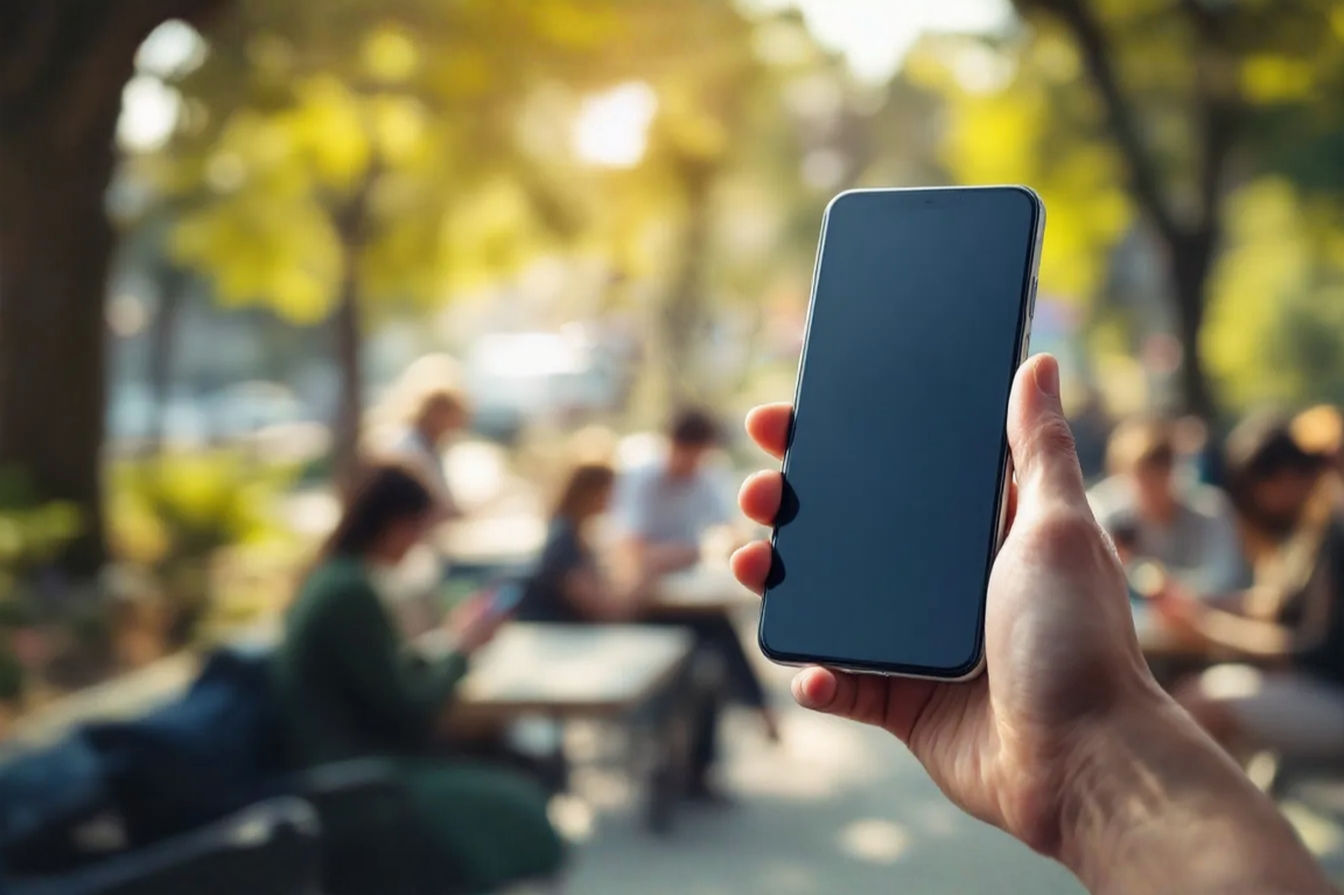This post may contain affiliate links. If you make a purchase through these links, we may earn a commission at no additional cost to you.
Buying a new cellphone or paying your monthly bill can feel expensive, right? It seems like carriers and manufacturers always want top dollar for the latest devices and services. But what if there were ways to get the phone you want or lower your bill without paying full price? You might think the only deals are the ones blasted in commercials, but that’s often not the case. Many valuable savings opportunities are less obvious, tucked away where you might not easily find them. This article will pull back the curtain on these hidden cellphone specials and show you how to find them. We’ll explore where carriers and retailers hide their best offers, how timing can play a huge role, and smart strategies to slash both the upfront cost of a phone and your ongoing monthly expenses. If you’re ready to stop overpaying and start saving, keep reading.
Understanding the Cellphone Market and Pricing
The world of cellphone sales and service is complex. It’s designed that way, partly to make it harder for you to compare prices directly and find the absolute best deal. Carriers and manufacturers use sophisticated pricing strategies to attract different types of customers. They don’t just set a price; they create a whole ecosystem of plans, promotions, and payment options. Understanding this system is the first step to finding savings.
The Complex World of Cellphone Pricing
Why are phone prices so high? A lot goes into the cost of a modern smartphone. There’s the research and development (R&D) that creates new features like better cameras, faster processors, and new screen technologies. Manufacturing involves expensive materials and complex assembly processes. Then there are marketing costs, distribution, and the profit margins for both the manufacturer and the retailer or carrier selling the phone.
On top of the device cost, you have the service plan. This covers access to the cellular network, including voice calls, text messages, and data. The cost of maintaining and upgrading this network—building towers, acquiring spectrum licenses, improving data speeds—is enormous. Carriers bundle the device cost (often subsidized or financed) with the service cost in various ways, making the true cost of each component less transparent. This complexity is where hidden deals can exist, often targeting specific customer segments or purchase behaviors.
How Carriers Structure Deals and Subsidies
Carriers rarely sell you a phone at its full, unlocked retail price without some kind of incentive. Their goal is to get you to commit to a long-term service contract or stay with them for a certain period. They do this through subsidies and financing deals.
A subsidy used to be the most common method: the carrier would sell you the phone for much less than its retail price, but you’d pay a higher monthly service fee over a two-year contract. The extra amount in your monthly bill would cover the phone’s true cost. While explicit two-year contracts are less common now, the principle remains. Carriers still offer phones at seemingly low upfront costs, but they recover the difference through monthly billing credits that require you to stay with them for 24 or 36 months. If you leave early, you often have to pay the remaining balance on the phone. This is essentially a financing plan tied to your service.
Financing plans (like installment plans) break the full retail cost of the phone into equal monthly payments added to your bill. Carriers often offer promotions where they’ll give you monthly credits that offset some or all of these payments, effectively making the phone “free” or heavily discounted if you stay for the full term. These credits are a key area where hidden deals appear. Sometimes these offers aren’t widely advertised but are available if you ask or if you’re an existing customer looking to upgrade.
Understanding that the carrier wants to keep you as a subscriber is key. Many “hidden” deals are simply incentives designed to prevent you from switching to a competitor or to encourage you to upgrade your device through them rather than buying it elsewhere.
Where Hidden Deals Lurk
Finding those less-advertised specials requires looking beyond the main promotions you see everywhere. Carriers, retailers, and even third-party providers have ways of offering discounts that aren’t always front and center. Knowing where to look can save you a significant amount of money.
Exploring Carrier-Specific Hidden Offers
Major carriers like Verizon, AT&T, and T-Mobile constantly run promotions, but some of the best ones aren’t always on the homepage of their website or in their national TV ads.
Targeted Offers: Carriers often send special offers directly to existing customers. These might come via email, text message, or appear when you log into your online account or use their app. These offers are often based on your specific plan, how long you’ve been a customer, or your data usage habits. For example, they might offer a discount on an upgrade if you’re on an older plan they want you to switch from, or a special trade-in bonus just for you.
Retention Deals: If you’re thinking about leaving your current carrier, call their customer service or visit a store and tell them you’re considering switching because of the cost. Often, the “retention” department has access to special deals not available to new customers or those just browsing. They might offer a lower monthly rate, extra data, or a discount on a new phone to keep your business. This requires negotiation, but it can be very effective.
In-Store vs. Online: Sometimes, deals differ between buying online and visiting a physical store. Store managers might have limited discretion to offer small incentives, or there might be display models or open-box items available at a discount (though be sure to check the return policy and warranty on these). Conversely, some online-exclusive deals cut out the overhead of a physical store. It’s worth checking both channels.
Employee and Partner Discounts: Many large companies have agreements with carriers to offer discounts to their employees. These aren’t usually advertised publicly. You typically need to verify your employment status to access them. Similarly, carriers partner with various organizations, clubs, or universities to offer group discounts. Check if your employer, school, or any groups you belong to have such a partnership.
The Power of MVNOs (Mobile Virtual Network Operators)
One of the biggest “hidden” ways to save on cellphone service isn’t a hidden deal from a major carrier, but rather switching to a different type of carrier altogether. Mobile Virtual Network Operators (MVNOs) don’t own their own cellular network infrastructure (like towers and spectrum). Instead, they lease network capacity from the major carriers (Verizon, AT&T, T-Mobile) at wholesale rates and then resell it to consumers, often at much lower prices.
Examples of popular MVNOs in the US include Mint Mobile (uses T-Mobile’s network), Google Fi (uses T-Mobile and US Cellular), Visible (uses Verizon’s network), and Cricket Wireless (uses AT&T’s network).
Why are they cheaper? Because they don’t have the massive costs associated with building and maintaining a network. They typically have lower marketing budgets and fewer physical stores, relying more on online sales and customer service. This allows them to offer plans that are significantly cheaper than the major carriers for comparable amounts of data, talk, and text.
The Catch? Sometimes, MVNO customers might experience slightly slower data speeds during peak network congestion compared to the major carrier’s direct customers. This is because the major carrier’s own customers get priority access to the network bandwidth. However, for many users, this difference is negligible, and the cost savings are substantial. MVNOs are a prime example of a less-advertised but widely available way to get cheap cellphone service. You often buy phones unlocked to use with MVNOs, which leads us to another savings opportunity.
Unlocked Phones: Freedom and Savings
Buying an unlocked phone means purchasing a device that isn’t tied to a specific carrier. You can insert a SIM card from any compatible carrier (including MVNOs) and use their service. This is different from buying a phone through a carrier, which is often “locked” to their network for a certain period (usually until the device is fully paid off).
Why buy unlocked?
- Flexibility: You can switch carriers whenever you want without needing a new phone, allowing you to jump on better deals or try out MVNOs easily.
- Wider Selection: You’re not limited to the specific phone models a carrier chooses to sell. You can buy directly from manufacturers (like Apple, Samsung, Google, OnePlus) or major retailers (like Amazon, Best Buy, Walmart).
- Potential Savings: While the upfront cost of an unlocked phone might seem higher because you’re paying the full retail price, you avoid being tied to a carrier’s potentially more expensive service plans. Over time, the savings on your monthly bill with an MVNO or a cheaper plan on a major carrier can easily outweigh the initial device cost. Also, retailers often have sales on unlocked phones that aren’t tied to carrier promotions.
Looking for deals on unlocked phones from manufacturers or large electronics retailers can uncover savings you won’t find by only looking at carrier stores. These retailers have their own sales cycles, often tied to holidays or major shopping events, independent of carrier promotions.
Timing is Everything
When you buy a cellphone can significantly impact how much you pay. The cellphone market, like many tech markets, follows predictable cycles and is heavily influenced by major shopping events. Being strategic about the timing of your purchase can unlock savings.
Seasonal Sales and Holiday Promotions
Retailers and carriers alike roll out major promotions during key times of the year. These are often the best opportunities to find significant discounts.
Black Friday and Cyber Monday: The period around Thanksgiving is arguably the biggest shopping event of the year in the US. Carriers, manufacturers, and retailers offer steep discounts, bundle deals, and attractive trade-in bonuses on phones and accessories. While these deals are advertised, the specific offers and their value can change rapidly, and some of the most aggressive ones might be limited-time doorbusters or online-only specials that require quick action.
Other Holidays: Other holidays like Memorial Day, Fourth of July, Labor Day, and the December holiday season also bring promotions. While perhaps not as massive as Black Friday, they are still good times to look for deals. Back-to-school season in late summer can also see promotions aimed at students.
Manufacturer-Specific Events: Apple’s “Back to School” promotion, for instance, often includes gift cards or discounts with Mac or iPad purchases, and sometimes extends to iPhone deals through partner retailers. Samsung often has promotions around the launch of their new Galaxy S or Z series phones, and also during general sales events.
Keeping an eye on these seasonal and holiday periods is crucial for timing your purchase to coincide with potential savings.
The Impact of New Model Releases
The launch of a new flagship phone from a major manufacturer (like a new iPhone or Samsung Galaxy S model) has a ripple effect on the pricing of older models and competitive devices.
Price Drops on Older Models: When a new model comes out, the price of the previous generation typically drops. This is a predictable pattern. If you don’t need the absolute latest features, buying the model from last year (or even two years ago) right after the new one launches can result in significant savings. These older models are often still excellent phones with plenty of life left in them.
Increased Trade-In Values: Carriers and manufacturers often offer enhanced trade-in values for older phones when you’re buying a new flagship. While this is tied to buying the new phone, the value of the trade-in can be a hidden bonus that effectively lowers the cost of the upgrade. Sometimes, the trade-in value offered during a new launch promotion is higher than the phone’s actual market value if you were to sell it yourself.
Competitive Reactions: When one manufacturer or carrier launches a major new phone or promotion, competitors often respond with their own deals to remain competitive. This can lead to a cascade of promotions across the market. Following tech news and industry announcements can give you a heads-up on when these pricing shifts are likely to occur.
Timing your purchase around these release cycles can be a smart way to get a great phone at a reduced price, either by buying the newly discounted older model or by leveraging enhanced trade-in offers for the latest one.
Leveraging Special Programs and Discounts
Beyond general sales and promotions, many people qualify for discounts based on their employer, student status, military service, or other affiliations. These aren’t always widely advertised and require you to proactively check if you’re eligible.
Unlocking Employee and Affinity Group Discounts
Many employers have negotiated deals with major cellphone carriers to offer discounted rates or other perks to their employees. These discounts can apply to your monthly service plan or potentially offer savings on devices.
How to Find Them: Check with your company’s Human Resources (HR) department or internal benefits portal. They usually have information on any corporate discounts available, including those for cellphone service. You might need to provide proof of employment, like a work email address or a pay stub, to the carrier to activate the discount.
Affinity Groups: Beyond employers, various organizations and groups might have partnerships with carriers. This could include:
- Labor unions
- Professional associations (e.g., bar associations, medical associations)
- Large membership organizations (e.g., AAA, AARP)
- Credit unions or banks
Check the member benefits section of any organizations you belong to. These discounts vary widely and might apply only to certain plans or services, but they are easy savings if you qualify.
Student, Military, and First Responder Programs
Many carriers offer specific discounts for students, active military personnel, veterans, and first responders (police, firefighters, EMTs). These are often significant and are a way for carriers to show support for these communities.
Student Discounts: Some carriers partner with universities or offer general student discounts. You’ll typically need a valid student ID or university email address to verify your enrollment. These might include discounts on service plans or special offers on devices.
Military and Veteran Discounts: Major carriers have dedicated programs for military members and veterans. These can offer substantial savings on monthly service fees for entire family plans. You’ll need to provide proof of service, such as a military ID, DD Form 214, or other acceptable documentation.
First Responder Discounts: Similar to military discounts, programs exist for police officers, firefighters, and emergency medical personnel. Verification of your status is required, often through official identification or online verification services partnered with the carriers.
These specific group discounts are often more stable and less promotional than general sales, providing ongoing savings on your monthly bill rather than just a one-time discount on a device. Don’t assume you don’t qualify; always check the carrier’s website or ask a representative about these specific programs.
Smart Strategies for Buying
Beyond looking for advertised or hidden deals, how you choose to buy your phone can also lead to significant savings. This involves considering options other than buying a brand-new device directly from a carrier at full price.
The Value of Refurbished and Used Phones
Buying a phone that isn’t brand new can be a great way to save money, often hundreds of dollars on flagship models. The two main categories are refurbished and used.
Refurbished Phones: These are phones that were previously owned but have been returned for various reasons (e.g., a defect, a cosmetic issue, or simply a customer return). They are then sent back to the manufacturer or a certified refurbisher. A certified refurbished phone has been inspected, repaired (if necessary), cleaned, and tested to ensure it’s in full working condition. It often comes with a limited warranty (though typically shorter than a new phone warranty) and sometimes new accessories and packaging.
- Directly from the Manufacturer: Apple Certified Refurbished, Samsung Certified Re-Newed. Buying directly from the manufacturer is usually the safest option, as they meet high standards and offer warranties.
- From Carriers: Major carriers also sell certified pre-owned or refurbished phones.
- From Reputable Retailers: Best Buy, Amazon, and other large retailers have refurbished programs. Look for “certified” or “grade A” descriptions.
Used Phones: These are phones sold directly by their previous owners, often through online marketplaces (like eBay, Swappa, Craigslist) or trade-in programs. When buying used, the condition can vary widely, and they typically don’t come with a warranty from the seller.
Risks of Buying Used: You need to be more cautious. Check the seller’s reputation, ask for photos and details about the phone’s condition, and ideally, meet in person in a safe location to inspect the device before buying. Verify the phone isn’t reported lost or stolen (you can often check the IMEI number online).
Savings: Refurbished phones typically cost 15-20% less than new, while used phones can be 25-50% less, depending on the condition and age. This is one of the most direct ways to lower the upfront cost of a premium device.
Mastering Trade-In Programs
Trading in your old phone when you buy a new one is a common practice, but mastering the process can unlock extra savings. Carriers, manufacturers, and retailers all offer trade-in programs.
How They Work: You give them your old device, and they give you a credit towards the purchase of a new phone or towards your bill. The value they offer depends on the make, model, condition, and age of your old phone.
Finding the Best Value: Don’t just accept the first trade-in offer you get.
- Compare Offers: Check the trade-in value offered by your carrier, the phone’s manufacturer, and major retailers like Best Buy or Amazon. Values can differ significantly.
- Look for Promotions: Carriers and manufacturers frequently run limited-time promotions where they offer enhanced trade-in values, sometimes giving you much more than the phone is actually worth on the used market, if you commit to a new device and service plan. These are often tied to new phone launches or major sales events.
- Condition Matters: The value depends heavily on the phone’s condition. A phone with a cracked screen or significant damage will get a much lower offer than one in perfect condition. Be honest about the condition when getting a quote.
Sometimes, selling your old phone yourself on a marketplace like Swappa or eBay might get you slightly more cash, but the convenience of a trade-in, especially during an enhanced promotion, can make it the better option. Always compare the net cost after the trade-in.
Bundle Deals and Family Plans
Carriers love to sell you more services and lines because it increases your overall bill and makes you less likely to switch. This desire to bundle can sometimes work in your favor, leading to savings.
Bundle Discounts: If you get your home internet, TV, or even home security through the same company as your cellphone service (like Verizon Fios + Verizon Wireless, or AT&T Internet + AT&T Wireless), they might offer a discount for bundling multiple services. These discounts aren’t always huge, but they can add up over time.
Family Plan Savings: Adding multiple lines to a single account on a family plan almost always results in a lower per-line cost compared to having individual lines. Carriers structure their plans to incentivize more lines. If you have family members or friends you trust, pooling together on a shared data plan can lead to significant monthly savings for everyone involved. The cost per line decreases as you add more lines up to a certain point.
While bundling and family plans require coordinating with others or consolidating services, the resulting discounts are a form of ongoing savings that can be substantial over the long term.
Reducing Your Monthly Bill
Finding a great deal on a phone is only half the battle. Your monthly service bill is an ongoing expense, and there are often hidden ways to reduce that cost as well, even without changing phones.
Auditing Your Current Plan
Do you know exactly what you’re paying for each month? Many people are on plans they signed up for years ago and haven’t reviewed since. Carrier plans and pricing structures change constantly. Your current plan might be outdated and more expensive than newer options available from the same carrier or competitors.
Check Your Data Usage: Look at your past few months’ bills or use your carrier’s app to see how much data you actually use. Are you consistently using much less data than your plan allows? You might be paying for data you don’t need. Switching to a lower-tier plan with less data could save you money. Conversely, if you’re constantly exceeding your data limit and paying overage fees, a plan with more data or unlimited data might be cheaper in the long run.
Review Included Features: Are you paying extra for features you don’t use, like international calling, premium streaming services bundles, or extra cloud storage? See if you can remove these add-ons.
Look for Plan Changes: Carriers regularly introduce new plan options. Sometimes, these new plans offer more data or features for the same price, or the same service for a lower price. Proactively checking the carrier’s website or calling customer service to ask about their current plan offerings is essential. Don’t assume the plan you signed up for years ago is still the best value.
Negotiating with Your Carrier
Many people don’t realize they can negotiate their cellphone bill, especially if they’ve been a loyal customer. While not always successful, it’s worth a try.
Be Prepared: Before calling, research competitor offers and the current plans your own carrier is promoting. Know what kind of deal you’re looking for (e.g., lower monthly cost, more data, a discount on an upgrade).
Call the “Retention” Department: When you call customer service, state clearly that you are considering switching carriers due to the cost. This often gets you transferred to the retention department, whose job is specifically to keep you as a customer. They have more flexibility to offer discounts or special deals than regular customer service representatives.
Be Polite but Firm: Explain why you’re considering leaving and mention the better offers you’ve seen elsewhere. Be polite but firm about your desire to lower your bill. They might offer a temporary discount, a permanent reduction, extra data, or a deal on a new phone. If the first offer isn’t good enough, it’s okay to say you need to think about it or see if they can do better.
Negotiation isn’t guaranteed to work every time, but it’s a “hidden” opportunity for savings that many people overlook. Your loyalty can sometimes be leveraged into a better deal.
Alternatives to Traditional Carrier Insurance
When you buy a new phone, especially an expensive one, the carrier will almost certainly offer you their insurance plan. While peace of mind is valuable, carrier insurance is often overpriced and has high deductibles. There are often cheaper alternatives.
Third-Party Insurance: Companies like SquareTrade, Asurion (which actually administers many carrier plans, but offers direct-to-consumer options), and Progressive (through their homeowners/renters insurance) offer cellphone insurance that is often cheaper than carrier plans for similar coverage. They typically cover damage, loss, and theft. Compare their monthly premiums and deductibles to the carrier’s offering.
Credit Card Protection: Many credit cards offer cellphone protection as a benefit if you pay your monthly phone bill with that card. This coverage typically covers damage or theft, though often with a deductible and limits per claim and per year. Check the benefits guide for your specific credit card to see if this is included. This is a truly “hidden” benefit that many people pay extra for through carrier insurance without realizing they already have coverage.
Self-Insurance: For some people, especially if you’re not prone to losing or damaging phones, simply setting aside the money you would have paid for insurance premiums into a savings account might be the most cost-effective option in the long run. If something happens, you have the funds available. If it doesn’t, you keep the money. This carries the most risk, but avoids the high cost of insurance and deductibles.
Exploring these alternatives to carrier insurance can save you a significant amount on your monthly bill while still protecting your investment.
Avoiding Pitfalls and Scams
While there are many legitimate ways to find hidden cellphone specials and savings, the desire for a good deal can also make you a target for scams or bad offers. Knowing what to watch out for is crucial.
What to Watch Out For
Not every offer is as good as it seems. Be skeptical of deals that seem too good to be true, especially from unknown sources.
“Free” Phones with Strings Attached: Carriers often advertise “free” phones. As discussed earlier, this usually means the phone’s cost is spread over 24 or 36 months and offset by monthly bill credits. If you leave the carrier early, you’ll owe the remaining balance. The phone isn’t truly free unless you intended to stay with that carrier for the entire term anyway. Always read the fine print on these deals.
Aggressive Sales Tactics: Be wary of salespeople (in-store or online) who pressure you to make a decision immediately or try to upsell you aggressively on features or insurance you don’t need. Take your time, ask questions, and don’t be afraid to walk away if you feel uncomfortable.
Third-Party Retailers: While many third-party stores and websites selling phones are legitimate, some may sell grey-market phones (intended for a different region, potentially lacking certain network bands or warranty coverage) or used phones misrepresented as new or refurbished. Stick to well-known, reputable retailers or the manufacturer/carrier directly when possible, especially for expensive devices.
Phishing and Fake Websites: Scammers create fake websites or send phishing emails/texts mimicking carriers or retailers to try and steal your personal information or payment details. Always double-check the URL of a website before entering sensitive information, and be suspicious of unsolicited communications asking for personal data.
Verifying Seller Reputation
When buying from individuals or smaller online sellers (especially for used or unlocked phones), do your homework to verify their legitimacy.
Online Marketplaces: On platforms like eBay or Swappa, check the seller’s rating and read reviews from previous buyers. Look for sellers with a high percentage of positive feedback and a history of selling similar items. Swappa specifically verifies that phones aren’t reported lost or stolen.
Local Meetups: If buying a used phone in person via platforms like Craigslist or Facebook Marketplace, always meet in a public place during the day. Bring a friend if possible. Inspect the phone thoroughly before paying. Check the screen, ports, buttons, and battery health. Insert your own SIM card to ensure it connects to a network and can make calls/texts. Verify the IMEI number hasn’t been reported stolen.
Refurbisher Certification: If buying a refurbished phone from a third party, look for certification. Is it certified by the manufacturer, or by a well-known, reputable refurbishing company? Understand their testing process and what kind of warranty they offer.
Taking these precautions can help you avoid scams and ensure that the “hidden” deal you find is actually a legitimate saving and not a costly mistake.
Conclusion
Finding hidden cellphone specials and savings might seem like a lot of work, but the potential rewards are significant. You don’t have to settle for paying full price for the latest phone or the highest monthly bill. By understanding how the market works, knowing where to look beyond the obvious advertisements, being strategic about your timing, leveraging special discounts you might qualify for, and exploring alternative ways to buy and insure your phone, you can unlock substantial savings.
Remember to audit your current plan regularly, don’t be afraid to negotiate with your carrier, and always exercise caution when encountering deals that seem too good to be true. The cellphone industry is constantly evolving, with new devices, plans, and promotions appearing all the time. Staying informed and being proactive in your search for savings is the best way to ensure you’re not missing out. Start applying these strategies today, and you might be surprised at how much you can save on your cellphone costs.






